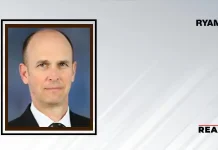If you want to track a person’s activities for a day, you could call them up every ten minutes and ask what they’re doing. Easier, though, would be to provide them with a journal to log their own actions. Scientists often rely on a method akin to the first to track how cells change over time; they pick cells out of a group at set time points and take a snapshot of their genetic activity. Now, researchers at Gladstone Institutes have developed a tool more like a journal or receipt book it logs a cell’s genetic activity for days at a time. The biological device, named a Retro-Cascorder, records data within strands of DNA, which can then be analyzed at any time to get the cell’s activity log.
Also Read: Menarini Silicon Biosystems and DIESSE Announced Strategic Partnership
“This new way of collecting molecular data gives us an unprecedented window into cells,” says Gladstone Assistant Investigator Seth Shipman, PhD, senior author of the new study published in the journal Nature. “In addition to providing a new tool for basic research, it lets us engineer cells to be living biosensors that can record changes to their environment.”
While all cells within an organism have identical genomes, they differ in which genes are turned on or off at any given time. Researchers can measure the degree to which a given gene is turned on inside a cell at different timepoints to track how the cell’s behavior, function, or identity changes over time.
Shipman and his colleagues wanted to engineer a system that would automatically record every time a particular gene was turned on. This would provide a more detailed look at a gene’s activity pattern. Shipman has long been interested in the use of DNA to store data—in 2017, he encoded a movie into the DNA of living bacteria—so DNA was a natural medium for the cellular logbook.
“DNA is a flexible data storage medium in which you can really encode whatever you want,” says Shipman. “It’s also easy to use because it already exists within cells.”
For the first step in creating the Retro-Cascorder, Shipman’s group turned to retrons, bacterial elements that produce a specific sequence of DNA when activated. The researchers added a retron to the gene of interest. Every time the gene was activated, the retron machinery would also create a corresponding bit of DNA with a barcode unique to that gene.




